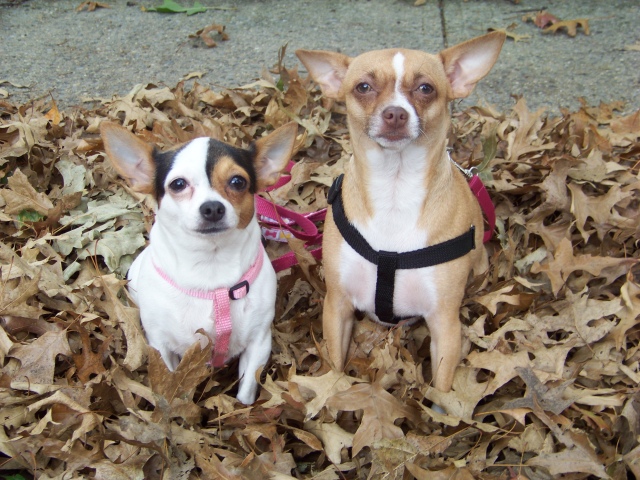QuestionRe: 3 y.o. spayed French Brittany. Reluctant to enter crate when it's located in back of truck or in minivan. I have had to pick her up and force her into the crate after which she's fine. The other day, for the first time, she refused to come out of the house when she knew I was going hunting. I had to drag her across the threshold into the garage. She then sat in a corner of the garage. A slight vibration on her e-collar brought her to the back of the truck where I picked her up and pushed her into the crate. She has never shown this degree of resistance. In the house she enters the crate without any problem She happily sleeps in it. She has never had a traumatic experience in her crate or at any other juncture of her life. We got her as a 7 week puppy from a reputable breeder. Once in her crate, she travels quietly and sleeps for the most part. She has logged thousands of miles in the crate. We borrowed a very large crate thinking this might help: no dice. She is a "perfect" house and hunting dog, eager to please albeit with endless energy. We can leave her loose in the house when we're away and she touches nothing. Absolutely no behavior problems with her. A sweetheart in all areas. No other signs of anxiety. Thank you for any help you might be able to give.
AnswerI may not be the expert who should be answering this question for you, as I do not advocate the use of shock collars for any reason, nor do I advocate forcing a dog to do something by dragging it. There are ways to accomplish the same behaviors from the dog without coercion, and I prefer those methods over the ones you are employing currently. So, right at the get go, we have different philosophies on dog training. But, I will share some thoughts should they prove useful to you.
If this is sudden behavior, the very first thing to do is to consult a vet in case the dog has an injury or medical issue that is not immediately apparent, but could impact her desire to jump up at that angle.
Next, I would try to think if there were anything about my own behavior that might have caused my dog to be fearful of the crate, even accidentally. It's quite possible that she is "good" in the crate because she knows she is trapped, so she just lies down and sleeps from learned helplessness rather than because she's "OK" or happy to be there. Trauma to you and trauma to her may feel like two different things. Some dogs hate the "metal noises" that crates make while they are being transported, for example.
My first inclination if I couldn't figure out the exact cause, would have been to make a "liverwurst trail" to get her to jump in on her own, since most reluctance in dogs is due to fear (that's a good reason for not dragging the dog - if you were scared of spiders, you'd probably hate being dragged toward a spider web filled with them). In other words, I would employ classical conditioning to change the dog's emotional response to the crate in the truck. If that failed, I'd take the crate off the truck, place it in the garage, and start CC there. That crate would become the best place for the dog to *voluntarily* be. I'd toss steak or turkey bits in, and let her go in to retrieve them, leaving the door to the crate open so she could come right out again. Every time she voluntarily went in, I'd attach a cue, such as "Kennel up" once she was inside, so that she would be able to understand that I wanted her to go in, and that a reward would be forthcoming. I would feed the dog, give the dog liverwurst, bully sticks, chew toys, food puzzles, etc. while she was in the crate, and I'd start closing the crate door for a few seconds here and there. Then, I'd start moving the crate gradually toward the truck area. Once the dog was going in and out of it there, I'd place it back in the truck, but I would allow the dog to jump in and out, without moving. Then, I'd move short distances, then increase the trip length. Hesitation at any point would tell you which part of the sequence the dog is actually uncomfortable with. Dogs can form pretty long "behavior chains" - for example, there are dogs that start to get nervous at 3am when dad rolls over in bed, knowing that's a signal for him eventually getting up & going to the bathroom, going back to bed, hearing the alarm, hitting snooze button, getting showered, getting dressed, picking up keys, and going out the door to work at 7:00!

 Dogs Figthing
Question
Stella and Scarlett
I have 2 minature dachshun
Dogs Figthing
Question
Stella and Scarlett
I have 2 minature dachshun
 Fearfull rescue dog
Question
Kiah
I have a puppymill rescue. She is a
Fearfull rescue dog
Question
Kiah
I have a puppymill rescue. She is a
 Dog aggression
Question
The 3 of them
I have 3 spayed female do
Dog aggression
Question
The 3 of them
I have 3 spayed female do
 My dog eats poop
Question
thats luna to the righ
Hello, how are you? I h
My dog eats poop
Question
thats luna to the righ
Hello, how are you? I h
 dog training.
Question
Brutis
I have a 6 month old german shepherd/la
dog training.
Question
Brutis
I have a 6 month old german shepherd/la